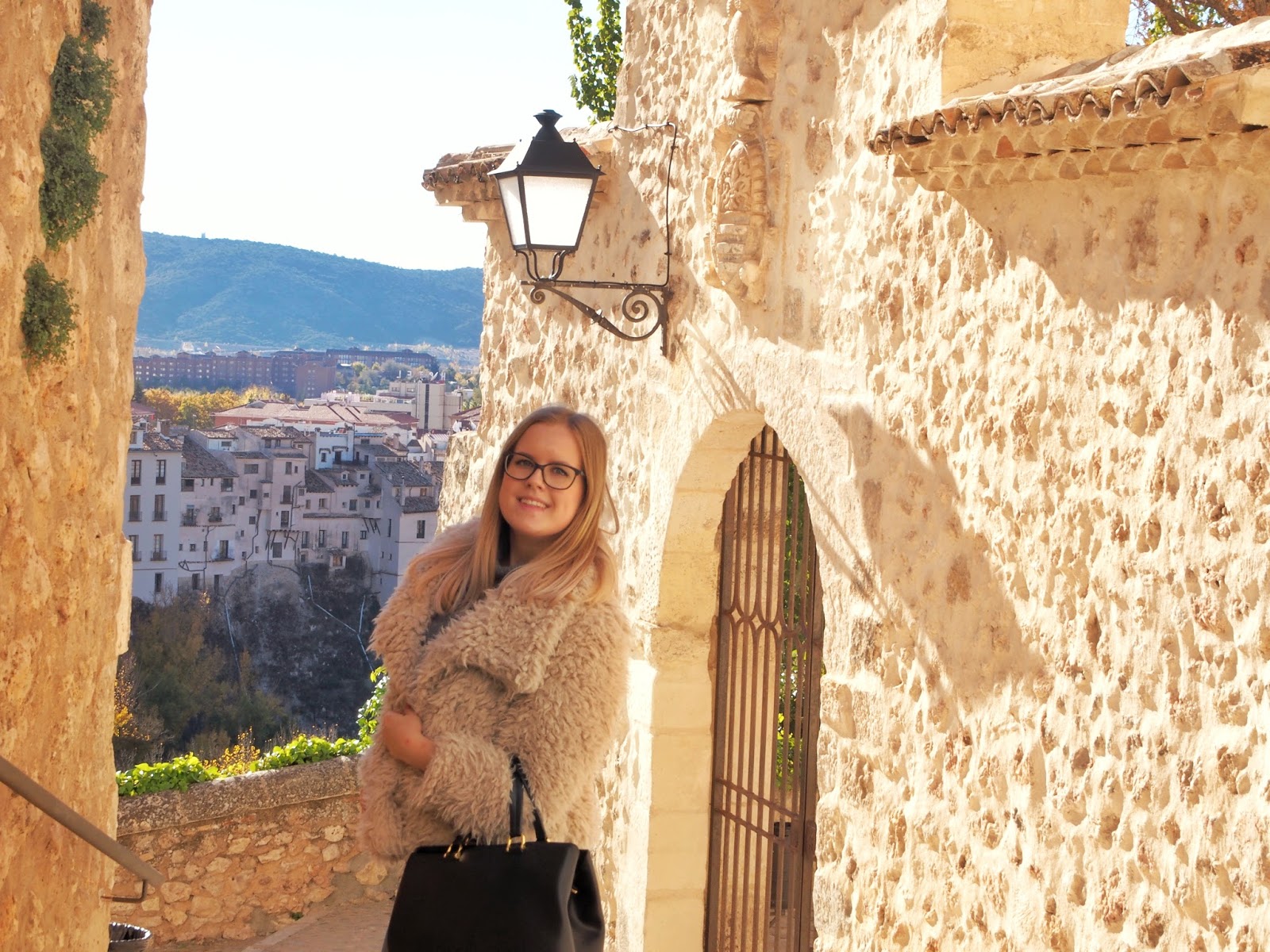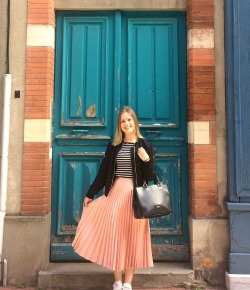Heya people! How's everyone? Spain has had a few long weekends lately (which, by the way, is puente in Spanish - a bridge!) and because of that I decided to go on a little excursion to Cuenca, of which I had heard only positive things. Its historical centre is a UNESCO world heritage site and frankly, I'm not surprised. The whole of Cuenca's centre was like a gigantic castles without a roof, whose archlike corridors lead to graceful scenery.
Ensimmäisenä oli tosiaan suunnistaminen riippuvien talojen luokse, Casas Colgadas, jonne pääsee loistavasti nousemalla ensin ylämäkeä autotien vierestä ja sitten ylittämällä sillan. Toi silta oli kyllä aikamoinen kokemus, sillä jokainen askel heilutti lankkuja puolelta toiselle. Voitte siis kuvitella ihmisten reaktion, kun joku lenkkeilijä paineli menemään kunnon rytinällä. Lapsi kysyi isältään, että miksi tuo setä saa juosta ja minä en saa. No, annapa siinä joku järkevä vastaus lapsoselle...
So my first thing was to find my way to the hanging houses, Casas Colgadas, which can be easily reached by following the uphill road and then crossing the bridge. Mind you - that bridge was quite an experience, each and every step waving it about from one side to the other. Having said that, you can probably picture the people's reaction when a jogger came pounding, leaving behind an enormous clatter. A kid asked his father why he wasn't allowed to run on the bridge but that man just did. Try and think of an answer for that poor little thing!
 |
| Casas colgadas |
 |
| Spot the odd one out... a great contrast between old buildings and a modern museum! |
So after discovering the hanging houses, it was time to enter the historical centre, which was waiting for me ahead. That's where a gorgeous cathedral, lots of small lookouts from which you could see beyond the city and the ruins of an ancient castle.
 |
| The ruins of the castle which has been partly restored. |
The hunger was real, so I went to the first restaurant I saw that was open close to Plaza Mayor. The waiter came so quickly that I didn't have the time to ponder which dish I should have, so the words "bacalao" and "plato típico" made up my mind for me. And I didn't regret for a minute! That mashed-potato-like dish, Bacalao al ajorriero, cod with mashed potatoes and garlic was to die for!
Harmikseni lippuja ei ollut enää jäljellä iltapäivän tunnelikierroksiin, Tuneles de Alfonso VIII, joten se jäi nyt välistä tällä kertaa. Sen sijaan, käännyin ilman sen kummempaa päämäärää yhdestä holvikaarikäytävästä ja olen iloinen, että tein niin: sieltä pääsi nimittäin laskeutumaan polkua pitkin joen luokse karkuun hälinää.
Unluckily, there were no tickets left for the afternoon tunnel tours at Tuneles de Alfonso VIII, so that's something I had to skip. Instead, I wandered around and ended up on one of those archlike corridors and I'm so happy I did; it opened a path which lead to a serene river, away from the touristy centre.
 |
| The ascending path leads to the river by the slanted wall |
Itse lähdin matkaan avanzabusilla, jolla kesti aika lailla se pari tuntia Madridin Estación Sur linja-autoasemalta - sopii siis hyvin päiväreissuksi tämä Cuenca. Miltäs tämä teistä näytti? Oliko Cuenca ennestään tuttu?
I set off on my journey with avanzabus which took be about two hours from Madrid Estación Sur coach station, therefore Cuenca is the perfect destination for a day trip. So what do you think of the city? Did you already know about Cuenca?
























